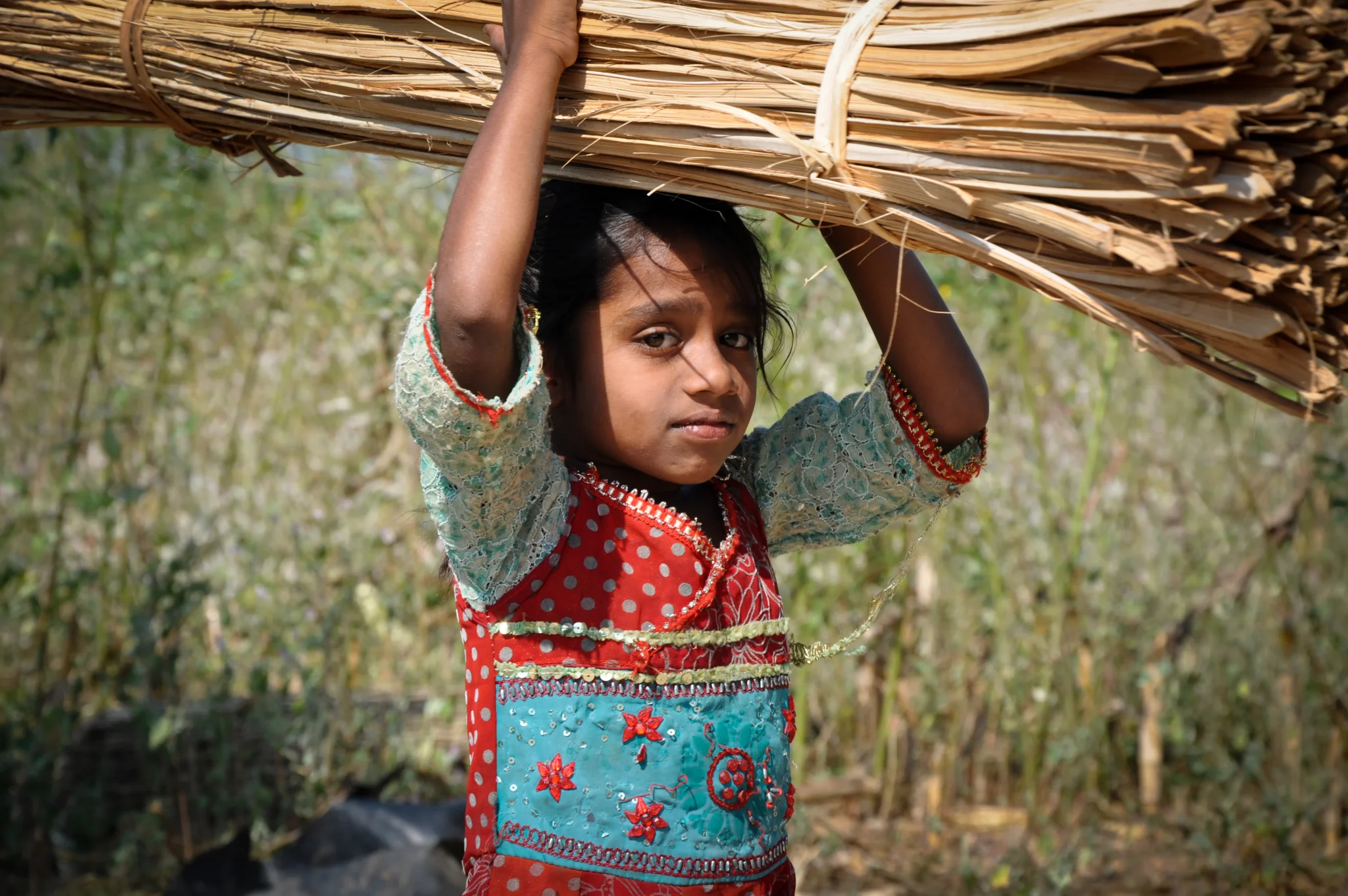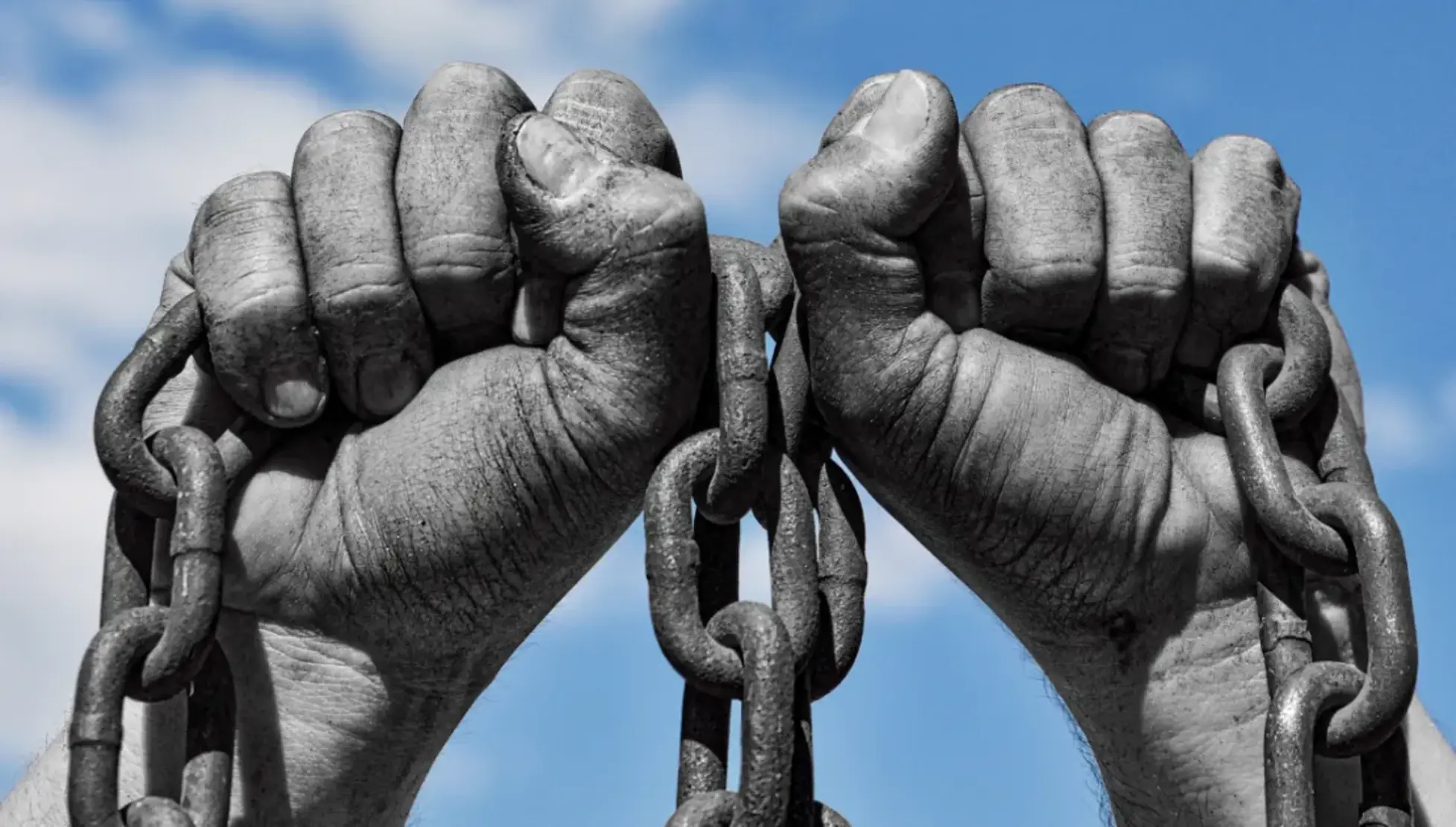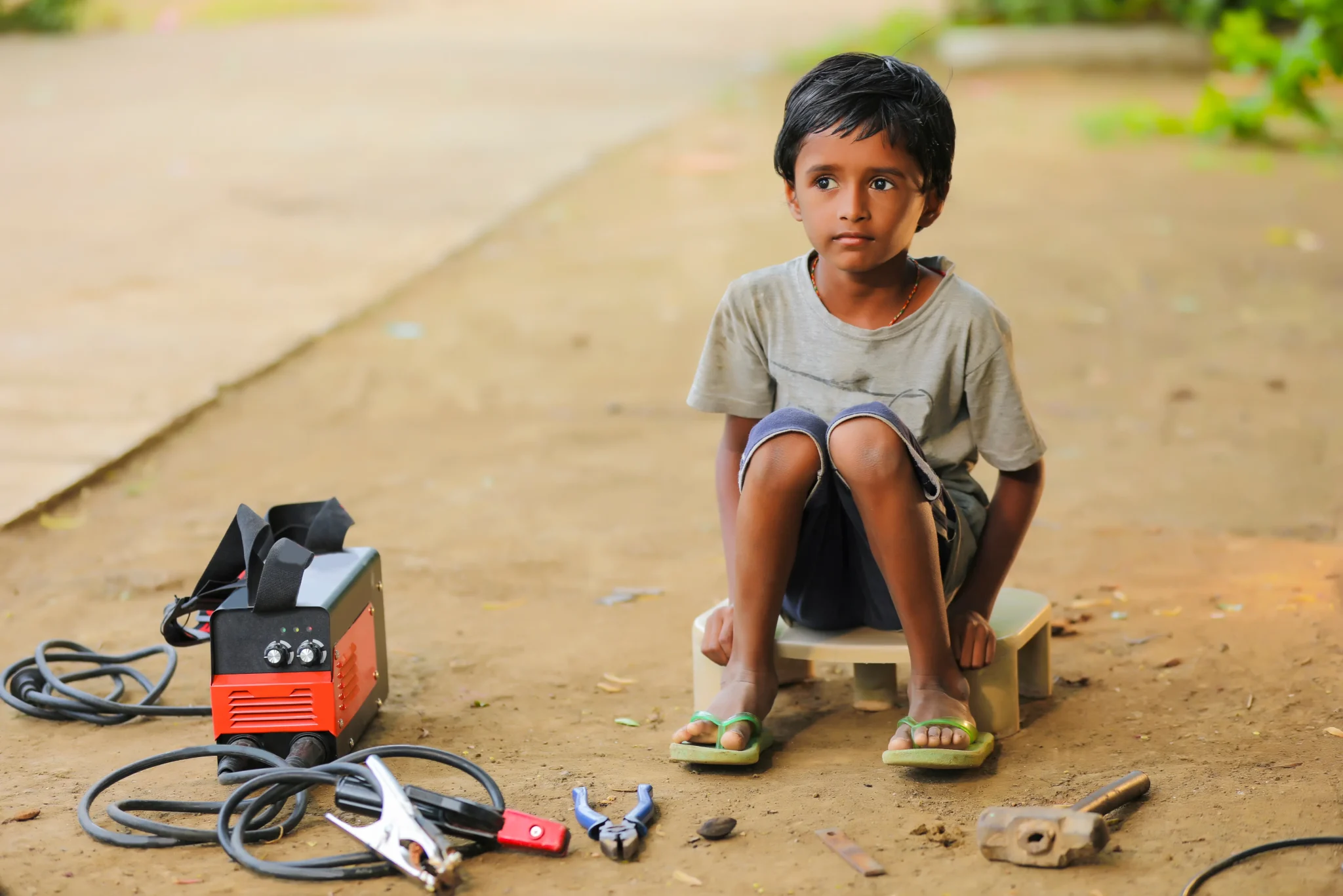Human Trafficking
Human Trafficking
25 Million people are victims by the traffickers every year
The act of trafficking involves the recruitment and transportation of persons using force and deception for the purpose of exploitation.
Defination
The use of coercion, fraud, or force to procure a commercial sex act or other form of work is known as human trafficking. Millions of men, women, and children are trafficked annually throughout the world, including in the United States. Victims may be of any age, ethnicity, gender, or nationality, and it can occur in any society. The following strategies may be employed by traffickers to entice victims into trafficking situations:
- Manipulation
- Violence
- False claims of lucrative employment
- Romantic partnerships
Human trafficking is a covert crime since victims are often prevented from seeking assistance by language issues, fear of their traffickers, and/or fear of law authorities.
Traffickers search for easy targets for a number of reasons, such as:
- Emotional or psychological susceptibility
- Financial difficulties
- Insufficient social safety net
- Natural catastrophes
- Unrest in politics
Statistics on Human Trafficking
- Between 2012 and 2022, 3,996 cases of human trafficking were reported to Canadian police services.
- Eighty-two percent of human trafficking cases in 2022 were documented in census metropolitan regions.
- Women and girls made up 94% of victims of human trafficking reported to the police in 2022.
- Men made up 82% of those charged with human trafficking in 2022.
- 24% of victims of police-reported human trafficking in 2022 were under the age of 17, 43% were between the ages of 18 and 24, and 22% were between the ages of 25 and 34.
- 34% of victims were trafficked by an intimate relationship in 2022, and 91% were trafficked by a someone they knew.
Highlight
- In fiscal year 2022, U.S. attorneys received referrals for human trafficking charges from 1,912 individuals, a 26% increase over the 1,519 individuals referred in 2012.
- Between 2012 and 2022, the number of people punished for human trafficking more than doubled, rising from 805 to 1,656. Between 2012 and 2022, the number of people convicted of human trafficking crimes rose from 578 to 1,118.
- In fiscal year 2022, U.S. district courts charged 1,070 defendants with any of the three categories of human trafficking offenses; 91% of these defendants were men, 58% were white, 20% were black, 18% were Hispanic, 95% were citizens of the United States, and 71% had no prior convictions.
- With the 203 defendants accused with sex trafficking, slavery, forced labour, and peonage, 53% were Black and 69% were male. In contrast, 71% of the 523 defendants accused with child abuse and sexual exploitation were Caucasian, and 94% of them were men.
Who are the trafficking victims?
Women and girls make up a sizable share of trafficking victims in Latin America and the Caribbean.
Forty-five percent of trafficking victims in South America are women, while another 17 percent are girls. In contrast, the situation in Central America and the Caribbean is concerning: women make up 30% of the trafficking victims identified, while girls make up 52%.
Forced labour and sexual exploitation are the main goals of trafficking. The primary locations for exploitation include taverns, hotels, flats, nightclubs, and unlicensed brothels.
Leading destinations in Asia
The need to address the threat has increased due to concerning patterns of human trafficking throughout East Asia and the Pacific. According to the United Nations Office of Drugs and Crimes’ (UNODC) 2016 Global Report on Trafficking in Persons (pdf), over 85% of victims were trafficked from within the region. Thailand, Malaysia, Japan, and China are destinations from nearby nations. According to the 2016 Global Slavery Index by the Walk Free Foundation, Thailand is the top destination in Southeast Asia for victims of human trafficking from Cambodia, Lao P.D.R., and Myanmar. Victims from Vietnam, the Philippines, and Indonesia have travelled to Malaysia. According to the UNODC data, women made up 51% of the victims in East Asia, and children made up over a third.
Over 60% of the 7,800 victims that were discovered between 2012 and 2014 were trafficked for the purpose of sexual exploitation. Domestic servitude and other types of forced labour also affect women. The mothers and children are frequently from isolated and underdeveloped areas. The Mekong area of China, Myanmar, Vietnam, and Cambodia is rife with forced marriages of young women and girls.
The startling growth in internet child pornography, including live streaming of child sexual assault, is associated with an increase in child trafficking in the area. It is a profitable industry with an estimated yearly profit of $3–$20 billion. Pornographic material has been found to be primarily supplied by nations like Thailand and Cambodia.
According to the International Organization for Migration (IOM), many victims from Southeast Asia move in pursuit of paid employment but end up being compelled to work in domestic, agricultural, construction, and fishing labour. According to the US Department of State’s Trafficking in Persons Report 2018 (pdf), the majority of them are men who are unable to pay the outrageous fees that unlicensed brokers and recruiters impose, making them susceptible to debt bondage and other types of exploitation. When it comes to forced labour, the Asia-Pacific area is the most profitable in the world (see chart). There have been numerous reports of forced labour in Thailand, Indonesia, and Cambodia’s fishing industries. Despite working up to 20 hours a day, victims receive inadequate or no compensation.
Who is most at risk?
Children, teenagers, and young adults are particularly vulnerable to human trafficking because of their greater “demand” for labour and sexual exploitation. Children are especially at risk since they are more readily tricked, coerced, and used in all types of human trafficking. Everyone is susceptible to human trafficking, regardless of gender. Any gender, nationality, or ethnicity could be a trafficked victim or someone at risk of being trafficked. Particularly at risk of being trafficked for the purpose of commercial sexual exploitation are women and young girls.
Disability, ethnicity, membership in a minority group, or sexual orientation — In addition to the personal susceptibility variables of gender and age, these factors may also be markers of THB.
A child without parental care is one who, for whatever cause and under whatever conditions, is not under the nighttime care of at least one of their parents. This includes both separated and unaccompanied children. People who have been trafficked or are “at-risk” of being trafficked frequently tell a predetermined or contradictory account, may be reluctant or unwilling to answer inquiries, or may provide vague replies. They might also act suspiciously, appear scared, hostile, irate, suspicious, or despondent, all of which might be symptoms of trauma brought on by the abuse and exploitation they experienced.
Recognizing signs of human trafficking
Anyone could become aware of a human trafficking situation. For instance, victims may be right in front of us at restaurants, hotels, construction sites, nail salons, senior care facilities, and agricultural areas. Even if you reach out to victims, they can be too afraid to accept your assistance because traffickers use such strong coercive tactics as threats of deportation and violence to the victim or their family members. You can act on your instincts and report any suspicious activity if you are aware of the signs of human trafficking.
These are some important warning signs that may indicate a possible human trafficking situation that needs to be reported, while the list is not all-inclusive. It is important to consider the context of each individual indicator, as they may not all point to a trafficking situation. Not every human trafficking victim will show these symptoms. Additional signs are detailed here
- An employee who resides with their employe
- Living conditions are subpar.
- Owe a recruiter or employer money
- When a worker wants to leave a work environment, they feel pushed to stay.
- Being unable to communicate with another person alone when there are several individuals living or working in a small area
- Responses from people seem to be prepared and practiced.
- Identity documents (such as a worker’s passport, work visa, etc.) are in the possession of an employer.
- There are indications of physical abuse.
- Someone is afraid.
- A worker receives very little or no compensation.
- A person who participates in commercial sex work is younger than eighteen.
What is human smuggling?
Securing or facilitating someone’s unauthorized entry into a state where they are not a citizen or permanent resident in order to obtain financial or other material benefits is known as human smuggling, or the smuggling of migrants.
What is human trafficking?
The coercion, kidnapping, fraudulent recruiting, transportation, transfer, harboring, or receipt of individuals for the purpose of exploitation is known as human trafficking. Usually, this entails the misuse of authority or the exploitation of weaker individuals without their permission.
How are they similar?
Although the two crimes are not the same, they have been used interchangeably in the media, especially when discussing the European migrant issue, which primarily involves African migrants.
Traveling individuals may experience abuse and exploitation, including human trafficking practices like forced labour or sexual exploitation.
What are the key differences?
Context: While a trafficked individual has been coerced into an action against their choice, migrants typically provide their assent to be smuggled.
Goal: Traffickers continue to take advantage of individuals, whereas smugglers finish their interactions with migrants after they have been transferred.
Borders: Trafficking can happen within a state or even within a neighborhood, but smuggling always takes place across borders.
Legislation against Human Trafficking
Under the Criminal Code, which forbids both human trafficking and other forms of exploitation associated with it, Canada has extensive legislation to prevent human trafficking. Additionally, cross-border trafficking is targeted by the Immigration and Refugee Protection Act. The Immigration and Refugee Protection Act’s Section 118 forbids willfully planning the entry of one or more people into Canada using kidnapping, fraud, deceit, or the use or threat of force or coercion. The maximum penalty for the offense is life in prison and/or a fine of up to $1 million.
Human trafficking is addressed by a number of laws and organizations, including:
The 2012 Human Trafficking Prevention and Suppression Act: In Bangladesh, this law punishes human trafficking more severely than the Penal Code of 1860.
The Model Law to Prevent Human Trafficking: Whether or not human trafficking is associated with organized crime, this statute covers both domestic and international trafficking.
The UK’s Modern Slavery Act of 2015 made all types of exploitation, including slavery and human trafficking, illegal by consolidating earlier laws.
The UN Convention against Transnational Organized Crime is supplemented by the Protocol to Prevent, Suppress, and Punish Trafficking in Persons.
The National Human Trafficking Resource Center is a hotline for referrals that links victims to local programs.
The Initiative to Save and Restore Human Trafficking Victims: This website raises awareness about human trafficking.
Visit the Department of Justice’s webpage on Canadian Legislation on Human Trafficking to find out more about how the legislation is aiding in the battle against human trafficking.
6 common forms of child trafficking
This year’s global campaign for World Day Against Trafficking in Persons urges accelerated action to end child trafficking.
Girls and boys around the world are being robbed of their childhood and falling victim to human trafficking.
Learn about the six forms of child trafficking




